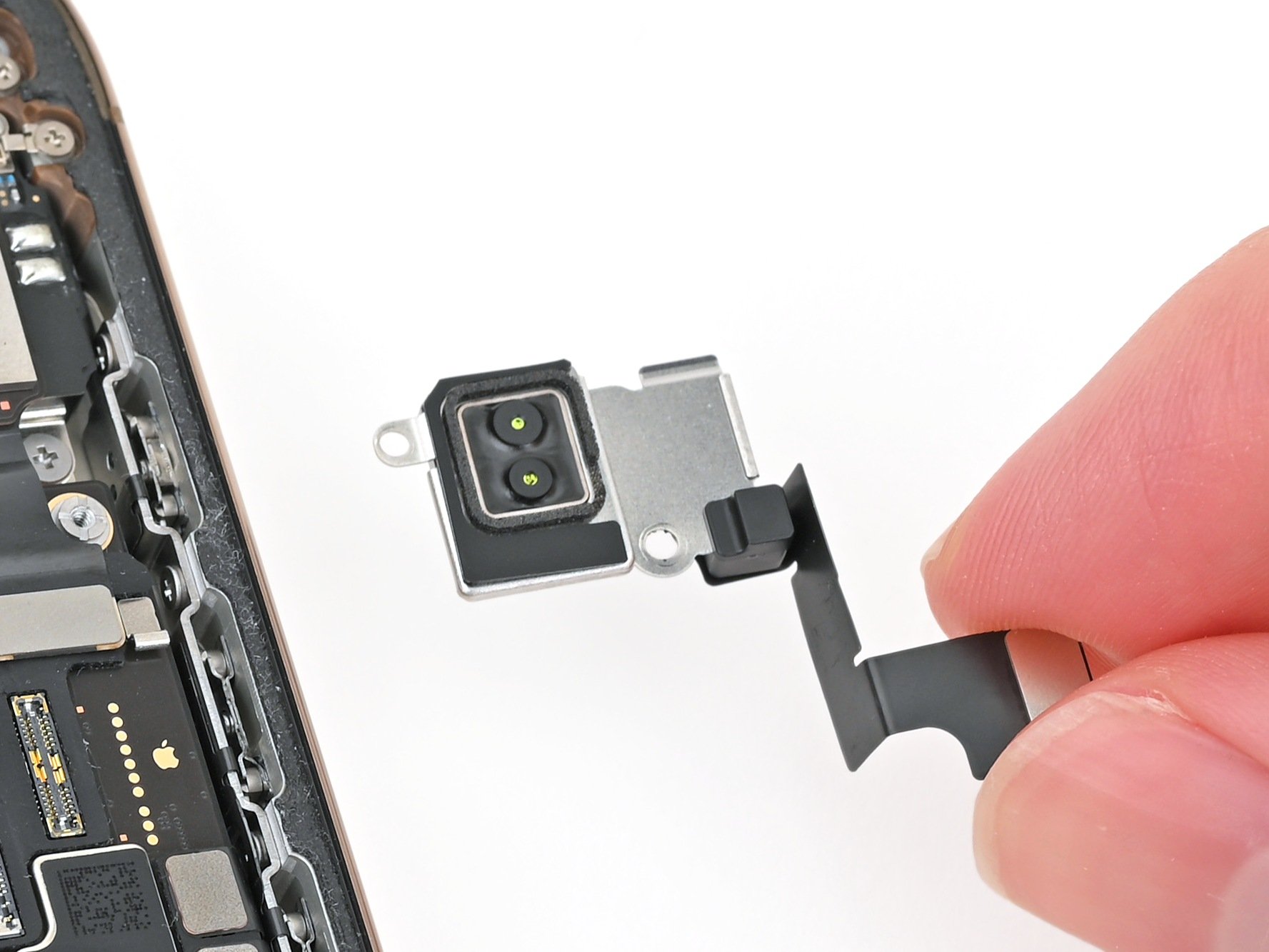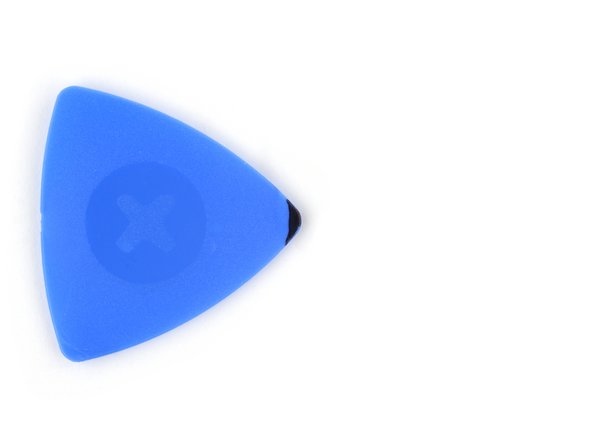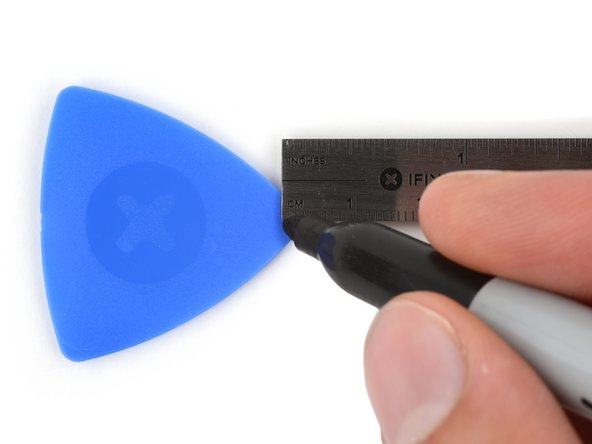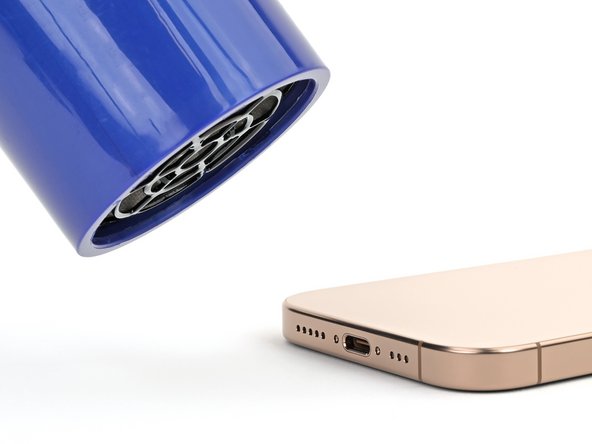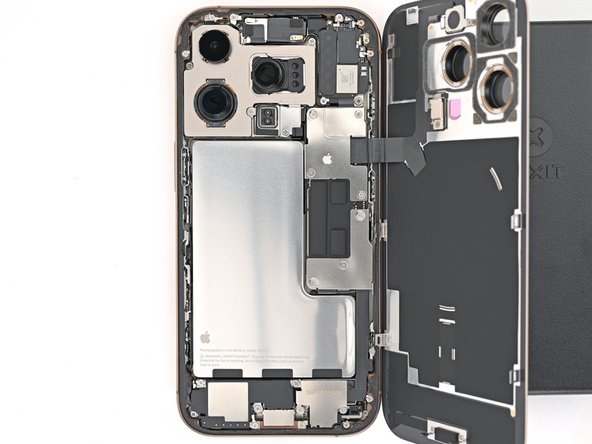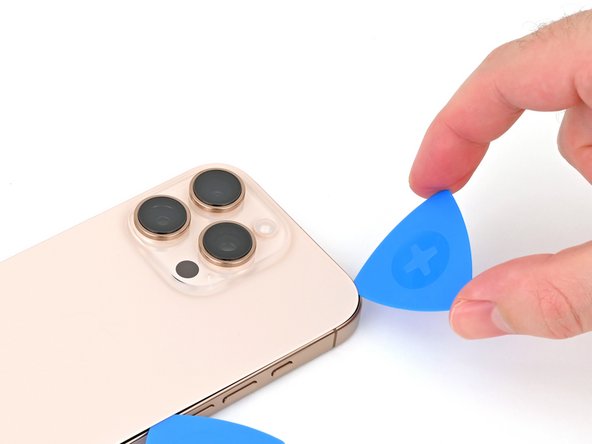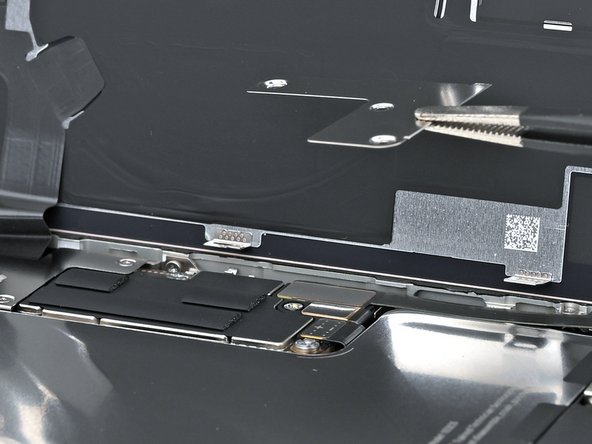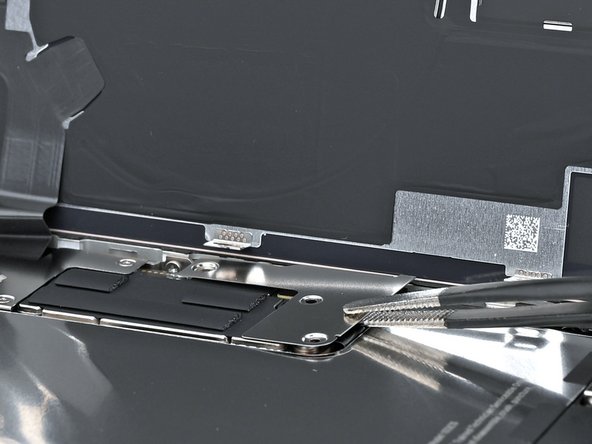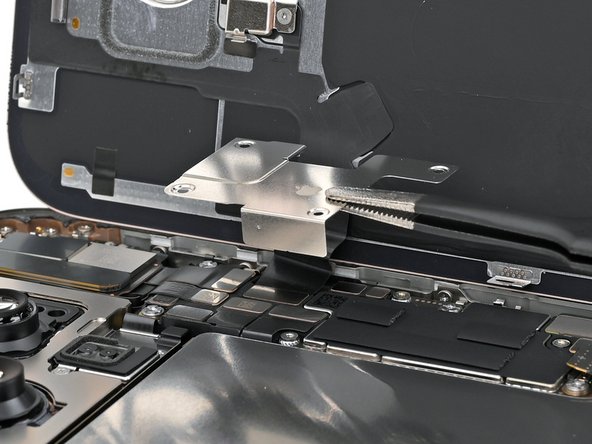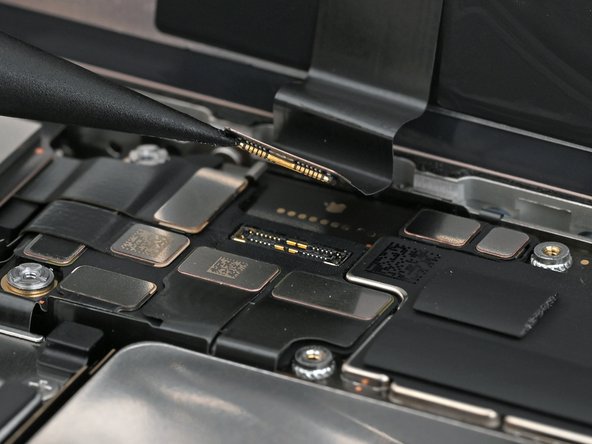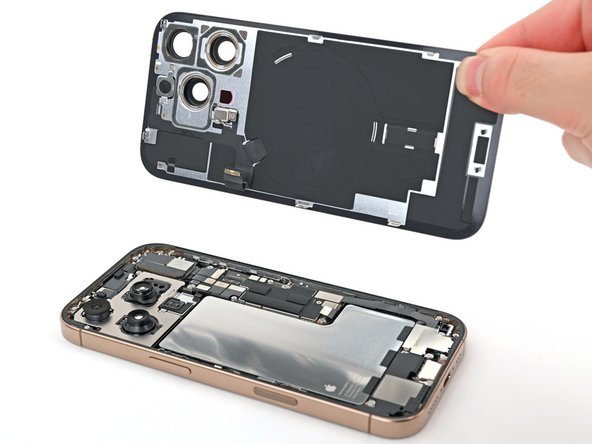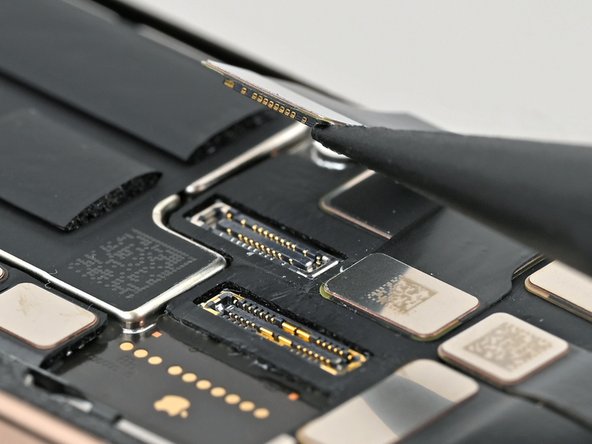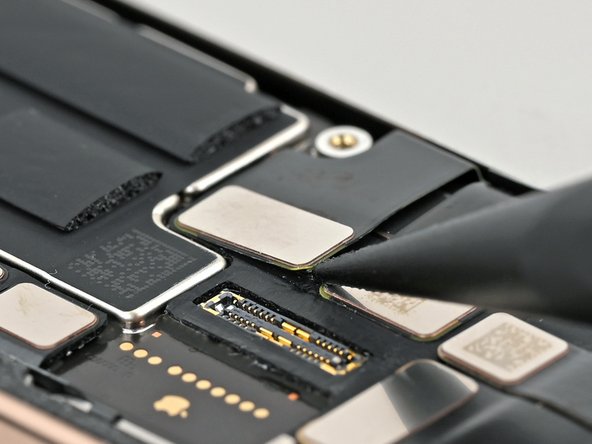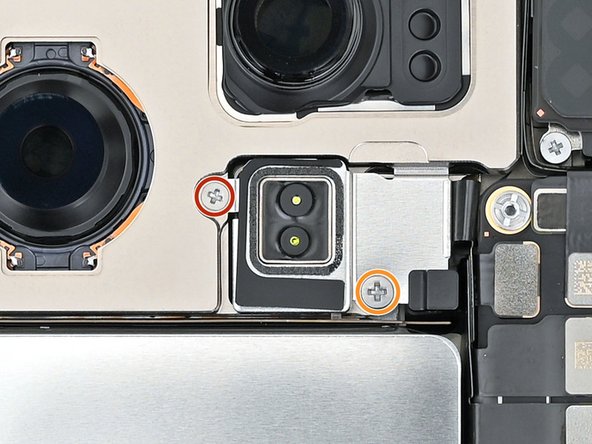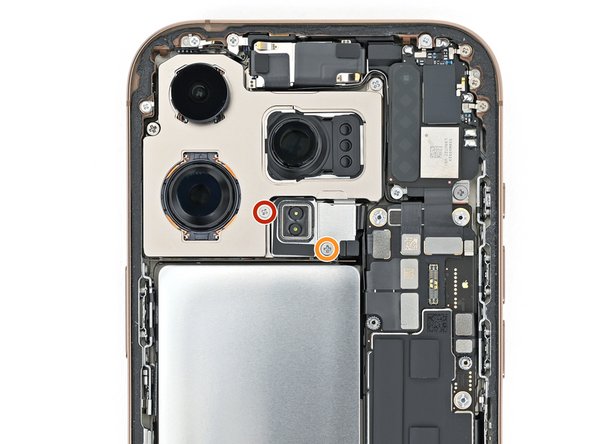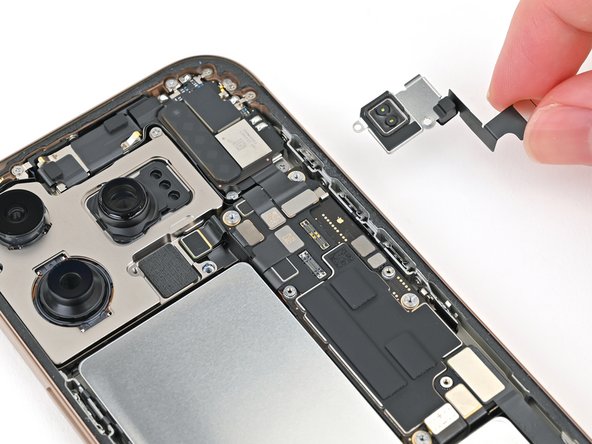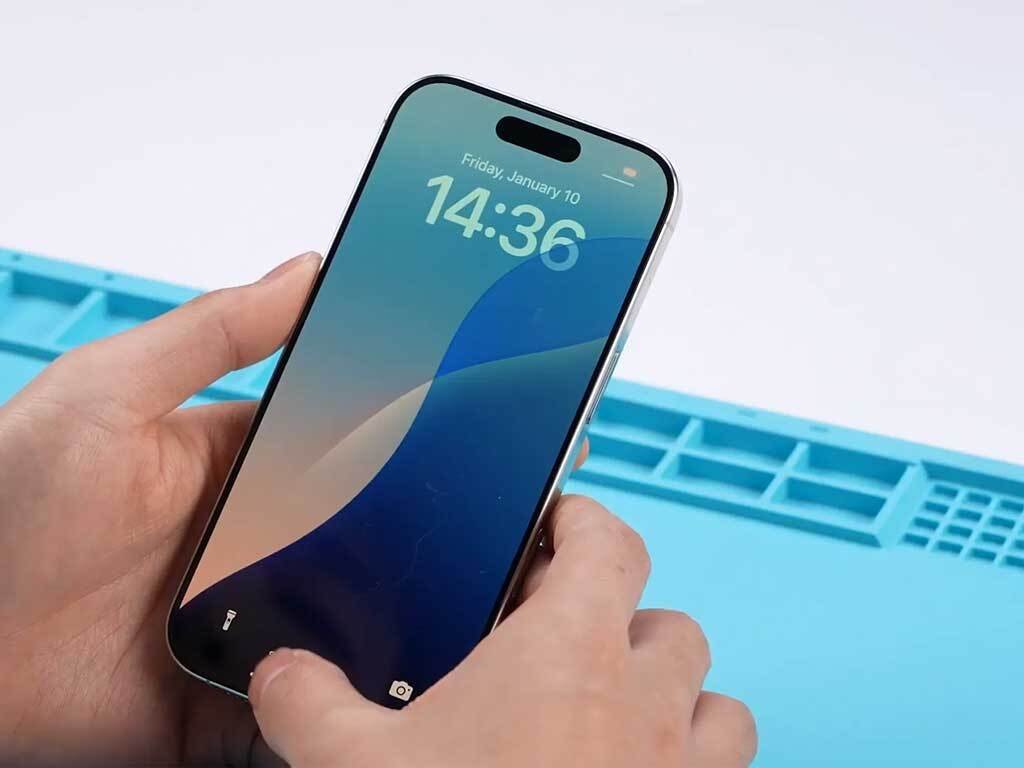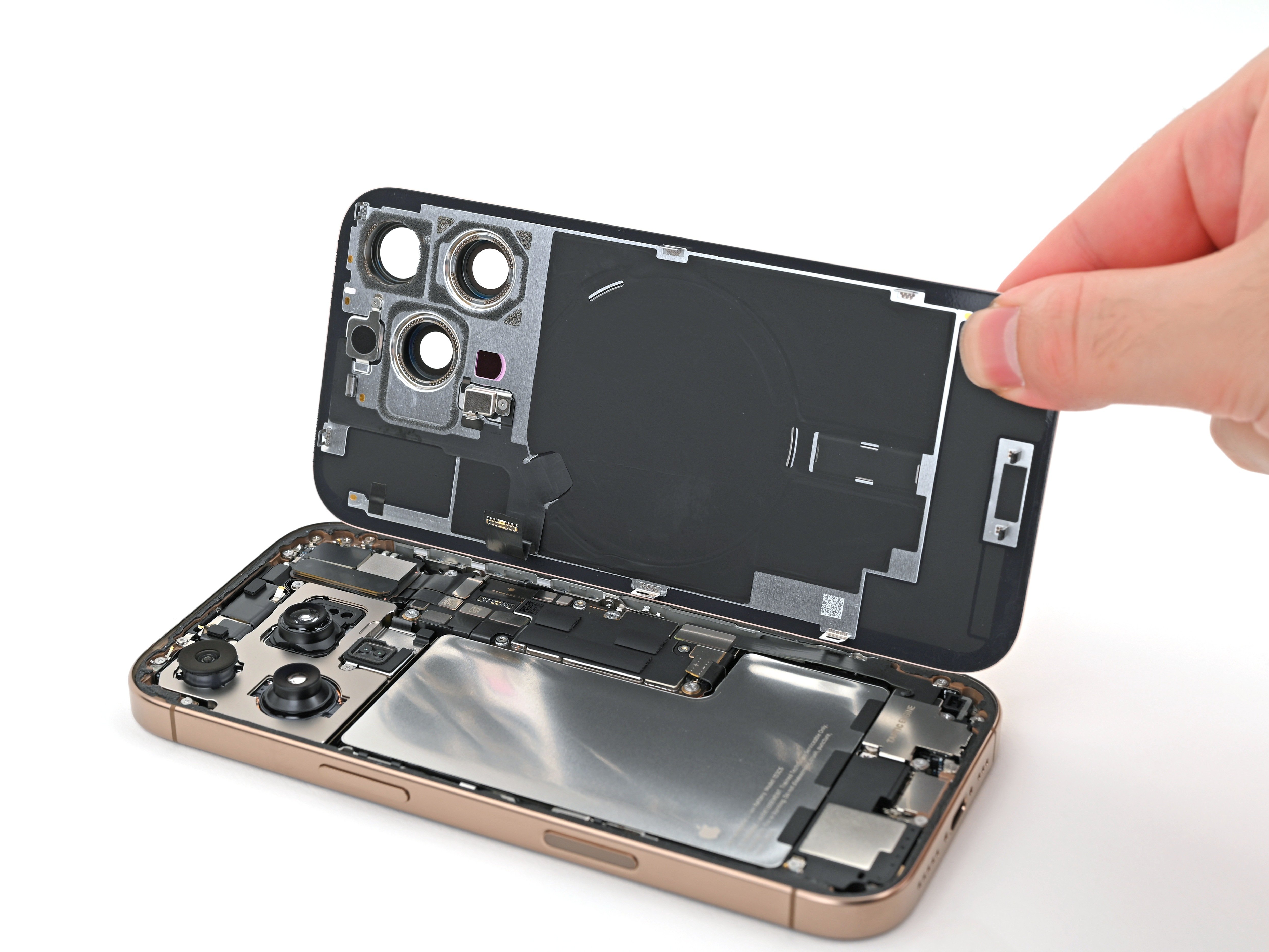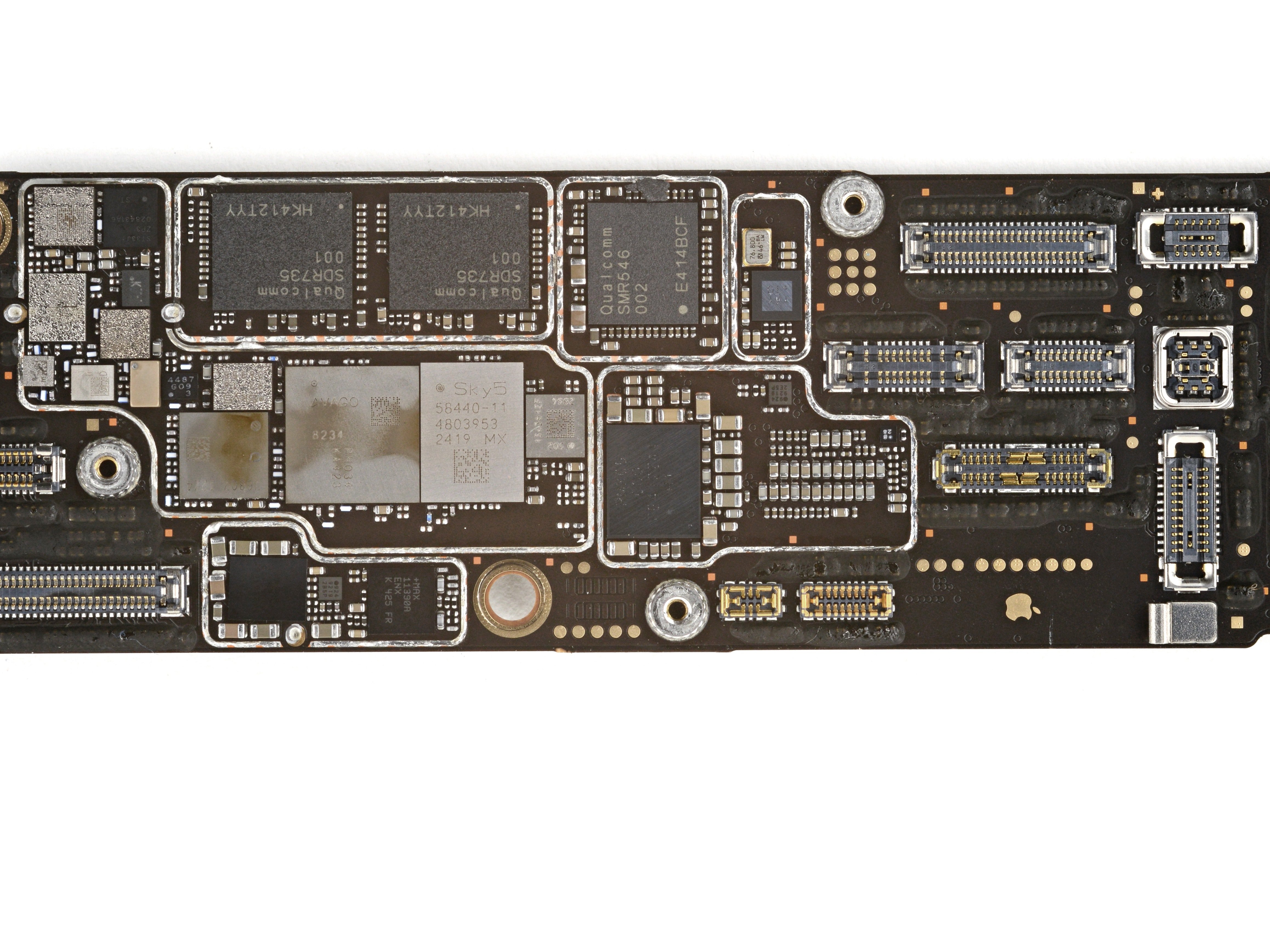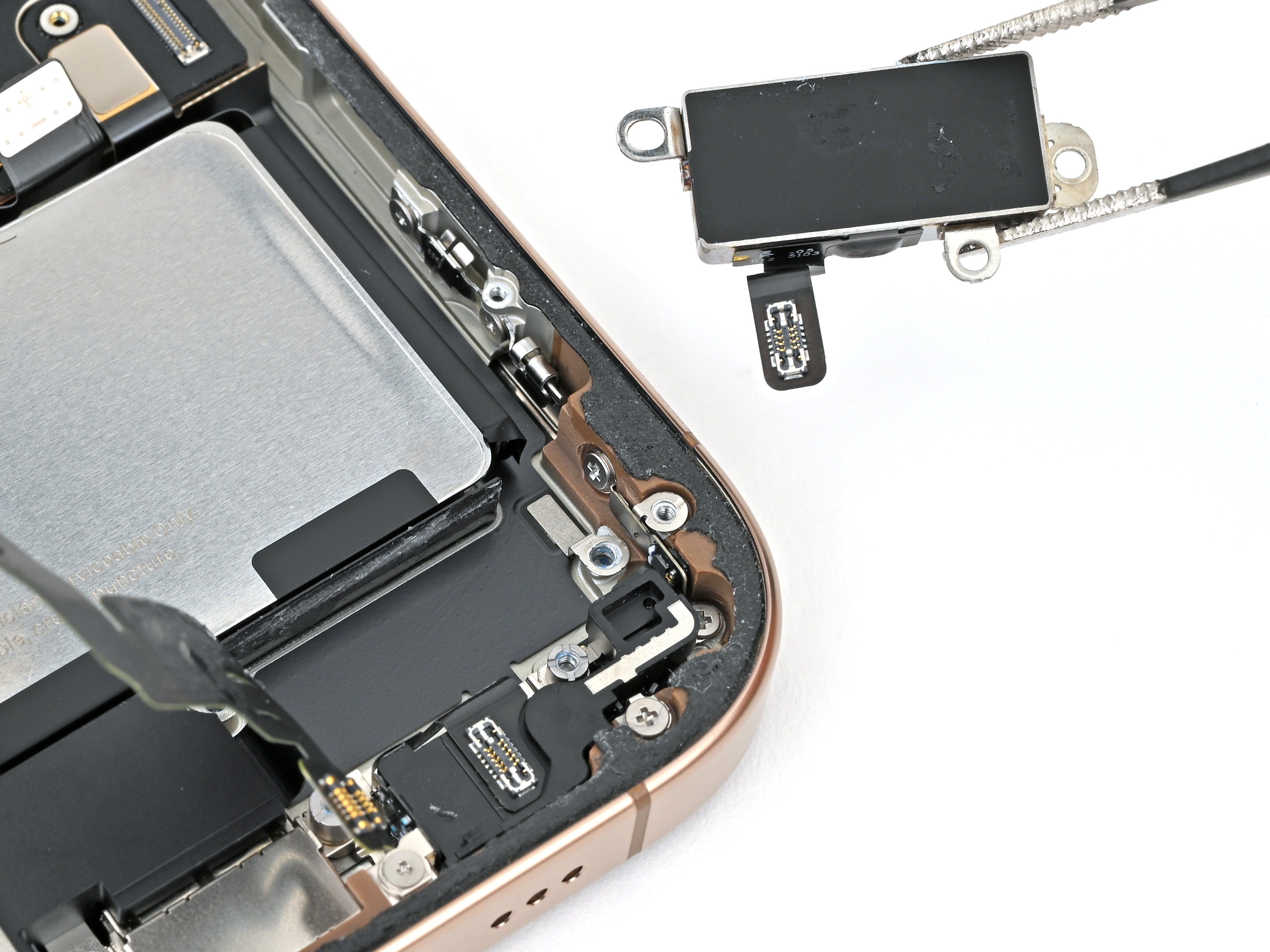iPhone 16 Pro LiDAR Sensor Replacement
Duration: 45 minutes
Steps: 25 Steps
Follow this simple guide to swap out the LiDAR sensor in your iPhone 16 Pro. Once you're done, make sure to calibrate a genuine Apple LiDAR sensor using Repair Assistant. Don’t forget, you'll need some replacement back glass adhesive to seal the deal and finish up. If you need a hand at any point, you can always schedule a repair for extra help.
Step 1
Let your phone's battery dip below 25%—a fully charged lithium-ion battery can be a bit of a drama queen when it comes to safety!
- First things first, let’s give your phone some breathing room by unplugging any cables attached to it.
- Next up, it’s power-off time! Hold down the power button along with either the volume button, then slide to turn off your phone. Easy peasy!
Step 2
Find a nice smooth spot near the bottom edge that's large enough for your suction cup to get a good grip.
- If the screen or back glass is seriously cracked, grab some packing tape and lay down overlapping strips across the glass. This will keep you safe and make taking things apart a whole lot easier.
Tools Used
Step 3
- Take a marker and draw a line 3 mm from the tip to mark where you'll open up the device. Easy peasy—just a quick visual cue to guide your next step. If you need help, you can always schedule a repair.
Be careful not to insert your opening pick too deep, as it could harm your device. To avoid this, mark your pick beforehand so you know your limit. You can also label the other corners of the pick with different measurements for added precision. Alternatively, tape a coin 3 mm from the tip of your pick to serve as a depth stop. If you need a hand with this, you can always schedule a repair.
Step 4
- Grab your P2 pentalobe screwdriver and carefully remove the two 7.4 mm-long screws on each side of the USB-C port. Stay steady and keep track of those screws—you'll need them later. If you run into any trouble, remember, you can always schedule a repair for extra help.
Step 5
- Heat things up a bit by applying a heated iOpener to the bottom edge of the back glass for about two minutes.
Watch out for overheating! Keep the heat below the level that could damage your battery—it's more sensitive than you might think. If you need help, you can always schedule a repair.
If you're feeling the heat, you can gently warm up the bottom edge of the back glass with a hair dryer or heat gun until it’s pleasantly warm to the touch. Just be careful not to overdo it—gentle is the way to go. If you need help, you can always schedule a repair.
Tools Used
Step 6
- Place the suction handle right above the USB-C port on the bottom edge of the back glass.
- Give the handle a firm, steady pull to open up a little gap between the back glass and the frame.
- Slide the tip of an opening pick into that gap and get ready to move on!
Tools Used
Step 7
As you make your way through slicing the adhesive holding that back glass in place, keep an eye out for these important spots:
If the spring contacts get bent out of shape, gently coax them back into place using a spudger or opening pick. Just make sure they line up nicely with their gold contact pads on the back glass. No need to force it—patience is key!
- There's a thin, sensitive cable connecting the back glass to the phone, right next to the volume up button. Be gentle—avoid inserting your pick here to prevent slicing the cable.
- Around the edges of the phone, you'll find several spring contacts. Take care not to insert your pick too deep in each step to avoid bending these delicate contacts.
Tools Used
Step 8
Keep your pick insertion shallow—no deeper than 5 mm at the bottom edge—to keep that spring contact safe and sound.
- Gently wiggle your pick along the bottom edge to loosen the adhesive. Keep it moving back and forth to make things easier.
- Leave your pick tucked in the bottom right corner to stop the adhesive from sealing back up. Easy does it!
Step 9
- Warm up the right edge of the back glass until it feels comfortably hot to the touch—that's your cue to move on.
Step 10
Careful slicing around the volume buttons—those wireless charging and flash cables are sneaky and don’t like to be nicked!
- Gently slide your pick along the bottom right corner and halfway up the right edge until you hit a firm stop at the clip holding the back glass in place.
- Keep the pick wedged in there to stop the adhesive from snapping back together.
Step 11
- Warm up the left edge of the back glass until it feels cozy to the touch.
Step 12
As you work through this, you'll feel and hear those metal clips giving way, letting you know you're on the right track.
- Pop in a second opening pick at the bottom edge.
- Gently slide that pick around the bottom left corner and up the left side of the screen to loosen the adhesive and unclip the metal bits.
- Keep this pick wedged in at the top left corner so the adhesive doesn’t snap back together.
Step 13
- Warm up the top edge of the back glass, especially around those volume buttons, until it feels comfortably warm to the touch. This will help loosen things up for the next step.
Step 14
Be gentle when inserting your pick—no more than 3 mm along the top edge—to keep those spring contacts happy and intact.
Get ready for some satisfying clicks as the top two clips pop free—you'll both hear and feel it!
- Gently slide your opening pick along the top edge and curve it around the top right corner up to the volume up button to loosen that stubborn adhesive.
Step 15
Hold tight on removing that back glass just yet—it's still hanging on with a fragile ribbon cable. Take the next few steps carefully to get it off without a hitch.
If the back glass isn't opening smoothly, don’t force it! Gently go over the edges with your pick again to see if there are any missed spots of adhesive or clips still holding on.
It’s a good idea to use polyimide tape to protect the rear camera lenses while you’re working. Just be careful not to press too hard on the lenses so you don’t damage those delicate stabilizers.
You might need to lift the back glass just a little before swinging it open completely to free those clips.
- Gently swing the back glass open toward the volume buttons, using a little finesse to avoid any cracks.
- Support the back glass with a clean, sturdy object like a small box to keep things steady and prevent cable strain.
- Carefully remove the opening picks to continue with the repair, making sure not to force anything.
Tools Used
Step 16
- Grab your tri-point Y000 screwdriver and loosen up the three screws holding down the lower connector cover:
- Two screws, each 1.2 mm long
- One screw, 1.0 mm long
Tools Used
Step 17
- Grab your trusty tweezers or just your fingers and gently lift away the lower connector cover. Easy does it—you're on your way to the next step! If you need help, you can always schedule a repair.
Tools Used
Step 18
- Grab your trusty spudger and gently work its point under the battery press connector to pop it up and disconnect it. You've got this!
- When it’s time to put everything back together, make sure to carefully line up the connector with its socket. Then, give it a gentle press down with your fingertip or the flat end of your spudger—first one side, then the other—until you hear that satisfying click. Remember, no need to force it! If it’s being tricky, just reposition and give it another go. You're doing great!
Tools Used
Step 19
- Grab a tri-point Y000 screwdriver and carefully unscrew the four screws holding down the upper connector cover:
- Two screws are 1.0 mm long,
- One screw measures 1.2 mm in length,
- And the last one is 1.6 mm long. Keep track of them as you go—these little guys are easy to mix up!
Tools Used
Step 20
- Grab some tweezers or use your fingers to carefully lift off the upper connector cover. Keep it gentle—this step’s all about finesse!
Tools Used
Step 21
- Gently use the spudger tip to lift and disconnect the back glass press connector. Take your time, no need to rush here.
Tools Used
Step 22
- Carefully lift off the back glass from the frame and set it aside. During reassembly, this is a great moment to give your repair a quick test: temporarily reconnect the battery and back glass (without the adhesive yet), power on the device, and verify everything works smoothly. Once confirmed, power it down, disconnect the battery, and proceed with reattaching the back glass using the proper adhesive. If you need help, you can always schedule a repair.
Step 23
- Grab a spudger and gently pry up the connector holding the LiDAR sensor. Carefully disconnect it to keep things smooth and safe. If you need help, you can always schedule a repair.
Tools Used
Step 24
- Grab your trusty Phillips screwdriver and let's tackle those screws holding the LiDAR sensor in place:
- First up, we have a 1.7 mm-long screw ready to be removed.
- And don't forget about the 3.0 mm-long screw just waiting for its turn!
Step 25
- Put your iPhone back together by following these steps in reverse—easy peasy!
- Once you’re done, make sure to calibrate your genuine replacement LiDAR sensor using Apple’s Repair Assistant. Just head to Settings → General → About → Parts & Service History, tap Restart & Finish Repair, and follow the prompts.
- Got e-waste? Be a planet hero and drop it off at an R2 or e-Stewards certified recycler.
- If things didn’t quite go as planned, no worries! Try some simple troubleshooting or reach out to our iPhone 16 Pro Answers community for a hand.
-
